Sewing Machine Needles Explained
Sewing machine needles looks simple, but there’s a whole world of technique behind a sewing machine needle. For every fabric, you can get a specific needle. What type of needle should you get? What needle size should you choose? How often do you need to change a sewing machine needle? What happens if a needle is blunt?
The thickness of the needle shaft, the sharpness of the point, the shape of the eye determine whether the needle passes through the fabric smoothly and without damaging the fibres. You want the smallest hole possible, but you want your needle to be strong and thick enough so it won’t bend. The correct shape and size of the eye allows the thread to run smoothly through the needle. An eye that is too large or too small will cause the thread to shred and break.
THE DIFFERENT PARTS OF A SEWING MACHINE NEEDLE
The groove down the front of a needle should be deep enough to allow your thread to ride smoothly. The scarf on the back allows the bobbin hook to loop your bobbin thread through the top thread to make a stitch. If it is not the right size or type, you can end up with skipped stitches.
SIX NEEDLE TYPES
1. Universal Needles
As the name suggests, this needle is suited for many different kinds of fabrics. It sews easily through woven as well as knitted fabrics. It has a slight ball point. You have to know that this needle does not always give the best results, but if you are satisfied with the result on a scrap, then just go for it.
2. Microtex Needles
A microtex needle is very thin and has a very slim, acute point that is perfect for straight stitches on delicate and microfiber fabrics. Use this needle with fragile fabrics like silk and organza or foils, artificial leather, and coated materials. The thin needle has a dangerously sharp point and is thus more fragile than other needles.
3. Ballpoint Needles
Knit or jersey fabrics are best sewn with a needle that has a ballpoint tip. The tip will make sure that the fibres of the knit fabrics are not damaged.
4. Stretch Needles
Synthetic, stretch, and elastic fabrics are best sewn with a needle that has a special eye, a specific scarf, and a medium ball point. This prevents stitches from skipping.
5. Denim Needles
Denim is a tightly woven fabric. A denim needle is a strong needle with a reinforced blade and a sharp point. The size of the needle depends on the thickness of the thread you are using. Because of the sharp point, you can also use this needle for imitation leathers.
6. Serger Needles
Check the requirements of your overlock machine or serger when buying serger needles. Most serger needles have a different shaft and thickness. Sometimes the length is different and some needles have a groove on the front and backside of the needle. Because a serger sews faster than a sewing machine, you need to replace these needles more frequently.
7. Embroidery Needles
An embroidery needle has a wide eye and groove through which the embroidery thread passes easily. This shape protects fragile threads and guards it against excess friction. It is designed for rayon and polyester thread embroidery applications. You can move easily in all directions with this needle. For the best results, don’t move your fabric too fast.
NEEDLE SIZES EXPLAINED
Needles are given numerical sizes. There’s a universal labeling system, but the system can be confusing because there is a European and an American labeling system. The American system uses 8 to 19, 8 being a fine needle, and 19 being a thick, heavy needle. European sizes range from 60 to 120, 60 being a fine needle and 120 being a thick, heavy needle. Either way, the higher the number, the thicker/heavier the needle.
The needle that is right for you depends on the fabric you are working with and the type of thread you are using. The general rule: the more fine the thread and the fabric, the smaller the size of the needle, and the heavier the thread and the fabric, the larger the needle. The smallest size available is 8/60, the biggest size is 20/120.
Delicate fabrics like silk or chiffon require a size 9, lightweight fabrics like taffeta a size 11. Medium weight fabrics, like flannel, wool, or poplin play nicely with a size 14 needle. If you are sewing a medium-heavy fabric, like wool suiting, you’ll want to use a size 16 needle. Heavy fabric, like denim, needs a size 18 needle.
| American | European | Fabric | Examples | ||
| 8 | 60 | extra fine | Silks, very fine synthetics, net chiffon, nylon, sheers,... | ||
| 9 | 65 | ||||
| 10 | 70 | lightweight | Tricot, lawn, thin jersey, organza, voile,... | ||
| 11 | 75 | ||||
| 12 | 80 | medium-weight | Quilting cotton, poplin, linen, flannel, thin denim, knit, jersey,... | ||
| 14 | 90 | ||||
| 16 | 100 | heavy-weight | Uphostery, heavy denim. canvas, leather, oicloth,... | ||
| 18 | 110 | ||||
| 20 | 120 | extra heavy | Heavy uphostery, extra heavy denim,... | ||
How Long Can You Use a Sewing Machine Needle?
You can start each new sewing project with a new needle. That way you know you’re working with a sharp needle and won’t run the risk of damaging your fabric with a dull needle. In general, you can do 8 hours of sewing with the same needle before throwing it away.
You can tell that your needle needs changing by the way that your sewing machine is feeding and by the sound the needle makes when it pierces the fabric.
Of course, you should also replace your needle any time it becomes damaged.
Organizing Your Sewing Machine Needles
If you are sewing with different materials, you’re changing your needle faster than it wears out. Plus, the markings on sewing machine needles are tiny. Can you always read the inscriptions? Once you remove a needle from the original needle box, it’s hard to find out exactly what size or type it is. And I often forget what kind of needle I have on my machine. Don’t you?
This is why we added this little needle cushion to our store. A pincushion to temporarily hold a sewing machine needle until you need it again for your next project. We named it the Needle Sorting Pincushion. We launched it last year and it’s a real hit.
Every time I remove a needle from the cushion to use on my machine, I put a pin in the corresponding square in the table to mark which needle I am currently using.. When I have to change the needle for another type or thickness, I move the pin and place the needle in the corresponding square so I can reuse my needle later and keep it organized at the same time. Look at the yellow headed flowerpin in the photo! The yellow pin is acting as the placeholder for the needle that I currently have on my machine.
Hope this little overview made the world of sewing machine needles a little less daunting and helps you to make the right choice for your project. Consider the size and type and don't forget to change your needle regularly. Many sewing machine issues are linked to a bad (not straight or blunt) needle, especially when thread is bunching up.
If you want to know more about sewing in general and learn about the tools and notions, check out our sewing for beginner series and browse through our vast library of sewing and quilting articles. All at your disposal, for free!
If you have any questions, don’t hesitate to send me an email at an@madamsew.com I’ll be happy to help wherever I can!
Happy sewing!
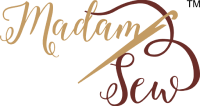








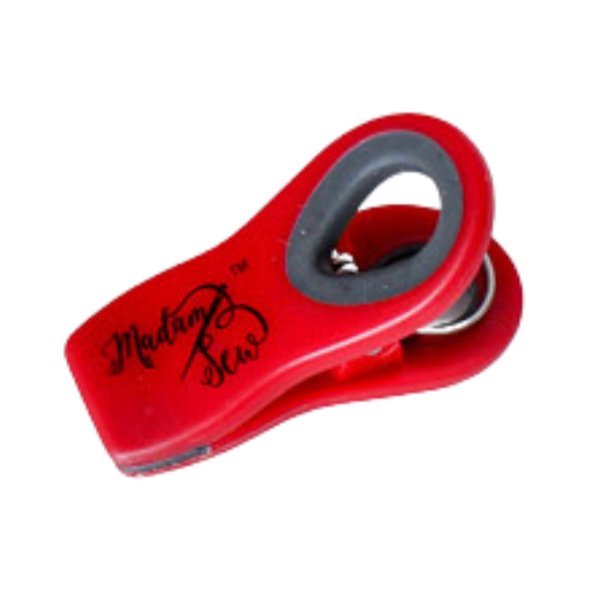
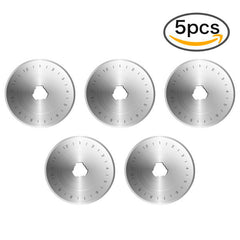
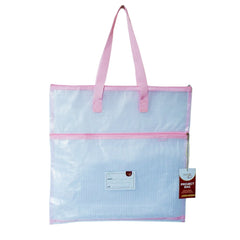
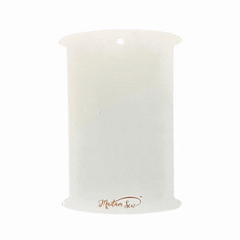
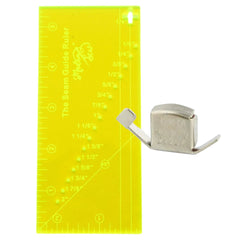
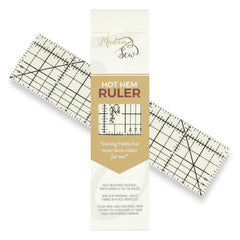
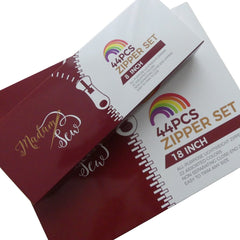
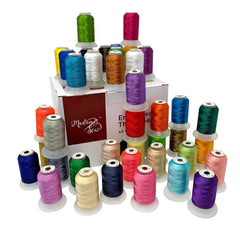

23 comments
This is a great article. I am an inexperience machine sewer. I usually hand sew, but want to start using my machine more. This information is invaluable to me. Thank you!
I enjoyed learning all about the type and sizes. I had no idea there so ?and varriances.
The chart listing fabrics was very helpful and the description of why and how needles actually function was great knowledge to have. I’ve sewn for a long time and didn’t have this knowledge. Thanks